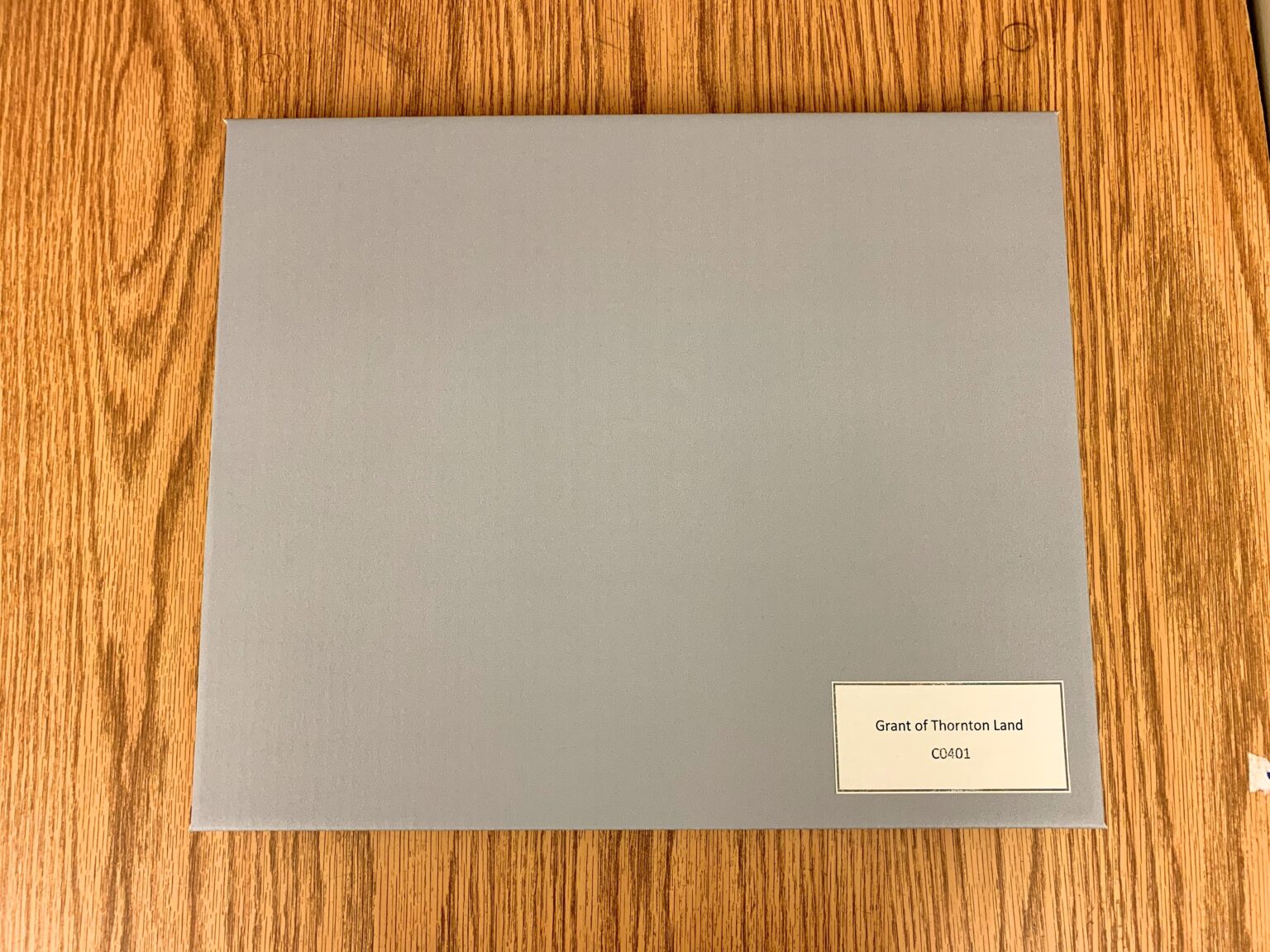This post was originally written for the George Mason University Libraries’ news blog, which you can find here.
In the Special Collections Research Center (SCRC), or in any archives for that matter, you hear the words preservation and conservation tossed around a lot – and for good reason! For though archivists are the stewards of hundreds of linear feet of collections and rare books, we don’t always have the resources to repair the inevitable damage that befalls the collections in our care. Damage can occur for a multitude of reasons, and is oftentimes, quite simply, unavoidable. Sometimes collections or purchased records arrive at our repository damaged, or sometimes they accrue damage over time due to the format degrading. However, just because a record or collection is physically damaged, does not necessarily mean that the research value is damaged. In fact, because the research value and uniqueness of the item is of the utmost importance, we call on our friendly preservation librarians and conservators to help us out.
Preserving items is an essential function in archives, one that keeps records safer for longer, so that researchers can continue to use them for as long as possible. Preservation is also a continuum, ranging from fixing specific damage on an item or collection, ensuring proper housing of items, managing climate and pest control in your repository, to ensuring your repository’s building is up to snuff. But what exactly is the difference between preservation and conservation?
Preservation
Preservation in archives is defined as “the professional discipline of protecting materials by minimizing chemical and physical deterioration and damage to minimize the loss of information and to extend the life of cultural property.”[1] In SCRC specifically, “preservation” generally means we can identify and solve the problem in-house with the help of our amazing Head of Preservation Services, Amy Sullivan. “Solving the problem” can entail mitigating and halting the cause of damage, and in some cases repairing the item. An example of this would be repairing a structurally unsound book binding, repairing rips and tears in a document, or getting a fragile item out of an old frame. Preservation also encompasses Digital Preservation, which is a whole other discipline that could be discussed at length another time.
Conservation
Conservation, on the other hand, is defined as “The repair or stabilization of materials through chemical or physical treatment to ensure that they survive in their original form as long as possible…Conservation counters existing damage, as distinguished from preservation, which attempts to prevent damage.” However, “Conservation does not always eliminate evidence of damage…”[2] Occasionally, we have to send off an item/items to be conserved – this generally occurs at the nexus of a) the item is damaged beyond the repairing capability of our in-house staff and b) the record is deemed of such archival value and importance that repairing it becomes a priority.
An Analogy
Let’s use a medical analogy to clarify the varying relationships between these cultural heritage experts in an instance of something needing conservation. A patient (a damaged record or collection) gets a routine check-up from their GP (the archivist), who sees them regularly and knows their medical history. The GP notices something wrong with the patient in their encounter – perhaps something they cannot fully address by themselves – and then refers the patient to a specialist. The specialist (or in this analogy the preservation librarian) can further identify the issue at hand and what the patient truly needs in order to address the issue satisfactorily. In some cases, the specialist might recommend surgery. And that’s when a surgeon (the conservator) comes along to fix or mitigate the damage. The GP, specialist, and surgeon, or in other words, the archivist, preservation librarian, and conservator all have differing and important roles, but working together as a team is essential to caring for the record or collection in question.
An Example
One such collection in SCRC, the Grant of Thornton land from Malcolm de Chastillon to Robert, son of Robert Symond (C0401) from 1327 C.E., was recently sent out for conservation at the Northeast Document Conservation Center (NEDCC). The item, which was acquired in relatively stable condition for its age, was deemed by SCRC archivists and the Head of Preservation Services to be in need of conservation. Though the item could be stored unharmed in our stacks, we were concerned about future patrons handling the item and therefore perpetuating the damage it had already suffered during its 694 years of existence. So, off to NEDCC it went and below is the conservation plan they proposed and that we accepted:
- Tension mount parchment onto a double-sided window mat with Japanese paper strips using wheat starch paste. The paper strips will be attached to the perimeters of the mat using Jade 403 and wheat starch paste.
- A sealed package will be created by sealing the window mats, object and archival backings between two pieces of UV filtering acrylic glazing with Scotch #805 archival sealing tape.
- Create an archival fluted box to store the sealed package.
And here is the final result! Now this collection can be easily accessed by patrons in a manner that is safe for all, and will ensure the longevity of the item.

Photos by the author.

Follow SCRC on Social Media and look out for future posts on our Facebook, Instagram, and Twitter accounts. To search the collections held at Special Collections Research Center, go to our website and browse the finding aids by subject or title. You may also e-mail us at speccoll@gmu.edu or call 703-993-2220 if you would like to schedule an appointment, request materials, or if you have questions.

